In-flight health tips for your next trip
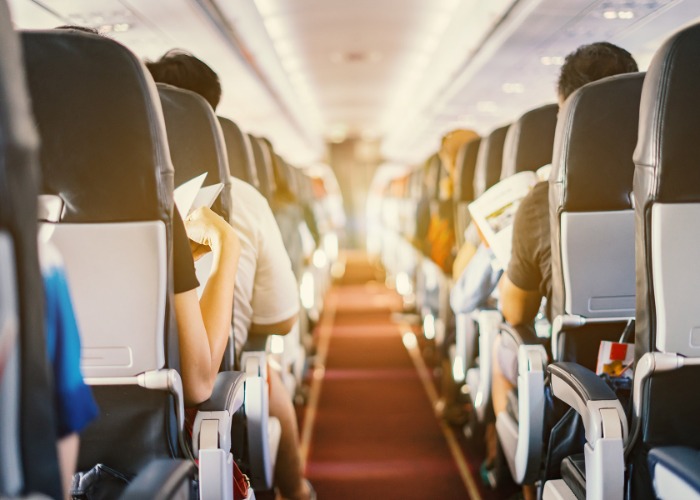
Travelling by plane can be tough, both on the body and the mind, and it doesn’t always get easier the more you do it. But with a few simple tips and tricks, you can make flying a healthier experience.
Whether you’re flying home for the holidays or halfway across the world for an epic adventure, we all need to be aware of the potential health implications on a plane, particularly those us who’ve booked a long-haul flight or struggle with air travel.
To make flights healthier, easier and more enjoyable, here are a few in-flight tips to help you hit the ground running.
All systems go
Airplanes can be a haven for germs, and since the coronavirus outbreak, more and more flyers are concerned about protecting themselves. Contrary to what you may think or have been told, getting a cold on a flight isn’t the result of poor air quality or recycled air – it’s more likely due to a combination of excessive germs and your body’s ability to deal with them. Hundreds of people have touched what you’re touching, and everyone is breathing – sometimes coughing and sneezing – in the same confined space for multiple hours.
Although masks are no longer mandatory, you still may want to wear one. And while most aircraft should have been thoroughly sanitised and cleaned before boarding, pack disposable wipes for the tray tables, arm rests and door handles. Although your best defence is getting some rest and staying hydrated, you may want to give your body a boost with an immune supplement or vitamin tablets.
Are you sitting comfortably?
No one likes being cramped in a plane seat and squeezing your bag under the seat in front of you isn’t going to help, so put it in the overhead locker. Do it straight away though, as they tend to fill up fast. Alternatively, book ahead to secure seats with extra leg room, or an upgrade if want a treat.
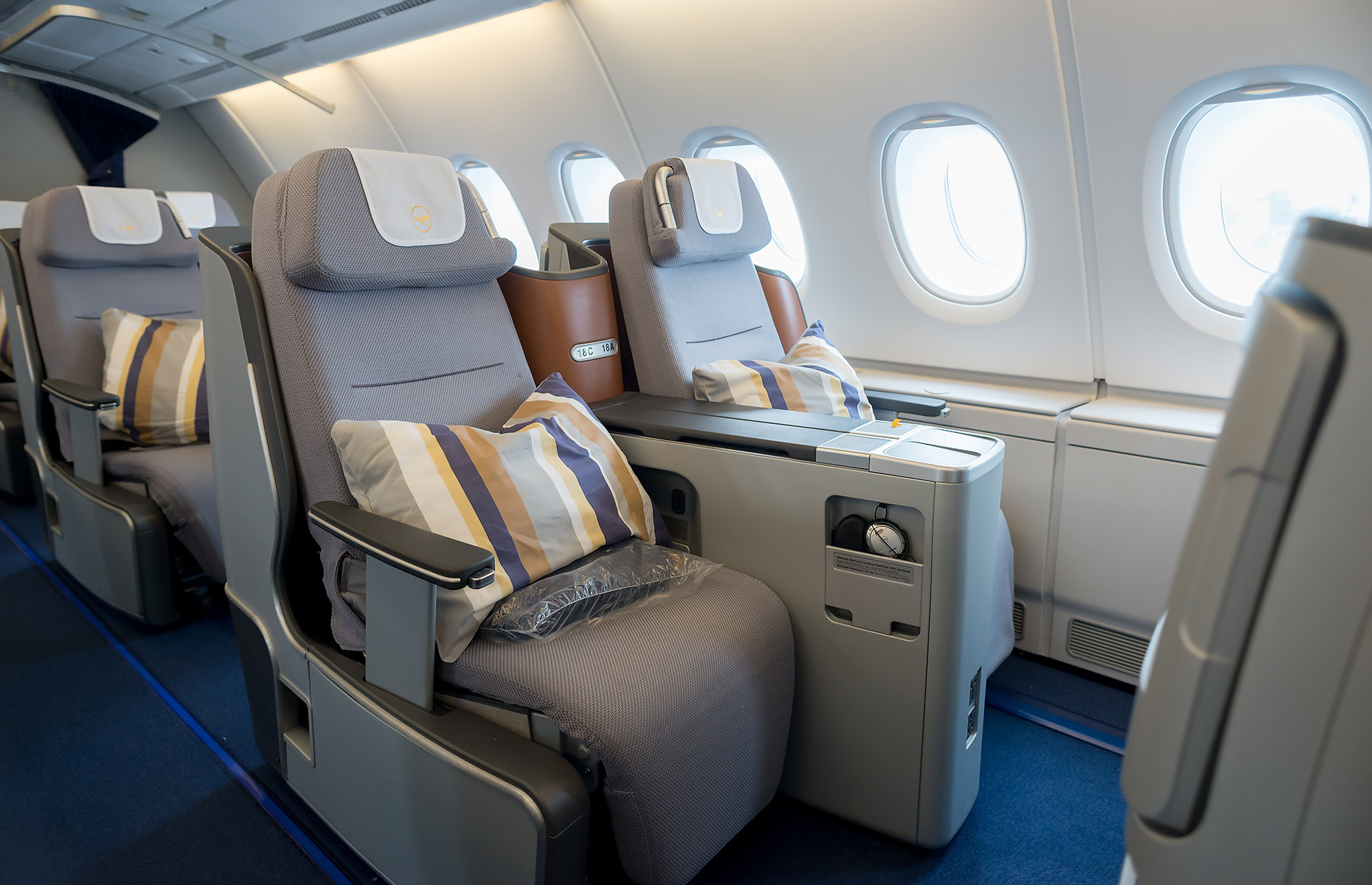 Stoyan Yotov/Shutterstock
Stoyan Yotov/Shutterstock
If you’ve got back pain, sit upright with support, such as a cushion (which are often on every seat), in the small of your back. Your knees and hips should be level and your feet should be flat on the floor. Take a few deep breaths when you’re settled into your seat. Not only will this keep you calm if you’re nervous about flying, but it can also help you adjust to the new altitude.
READ MORE: 8 airline upgrades worth the money
Dress for success
Plane temperatures can range from unbearably stuffy, which has you desperately reaching for the twisting blowers above your head, to practically Arctic cold when you’re sat shivering in your shorts and T-shirt. Be prepared for both eventualities by dressing in a base layer that you’ll be comfortable hanging out in for the duration of your flight. A warm packable jacket, good socks and a beanie hat are always helpful in case your flight does end up being surprisingly cold, especially on those early morning flights.
Window of opportunity
Some people are out like a light straight after take-off, while others have trouble getting a wink of sleep on board a plane. While you shouldn’t count on restful sleep, if you are planning to catch some shut-eye, opt for a window seat. Not only will you have control over the window shade (and sunlight), but you’ll also be out of the way of climbing neighbours, tapping you on the shoulder to get up, or people bumping into you in the aisle. Also, pack a neck pillow, eye mask and earplugs.
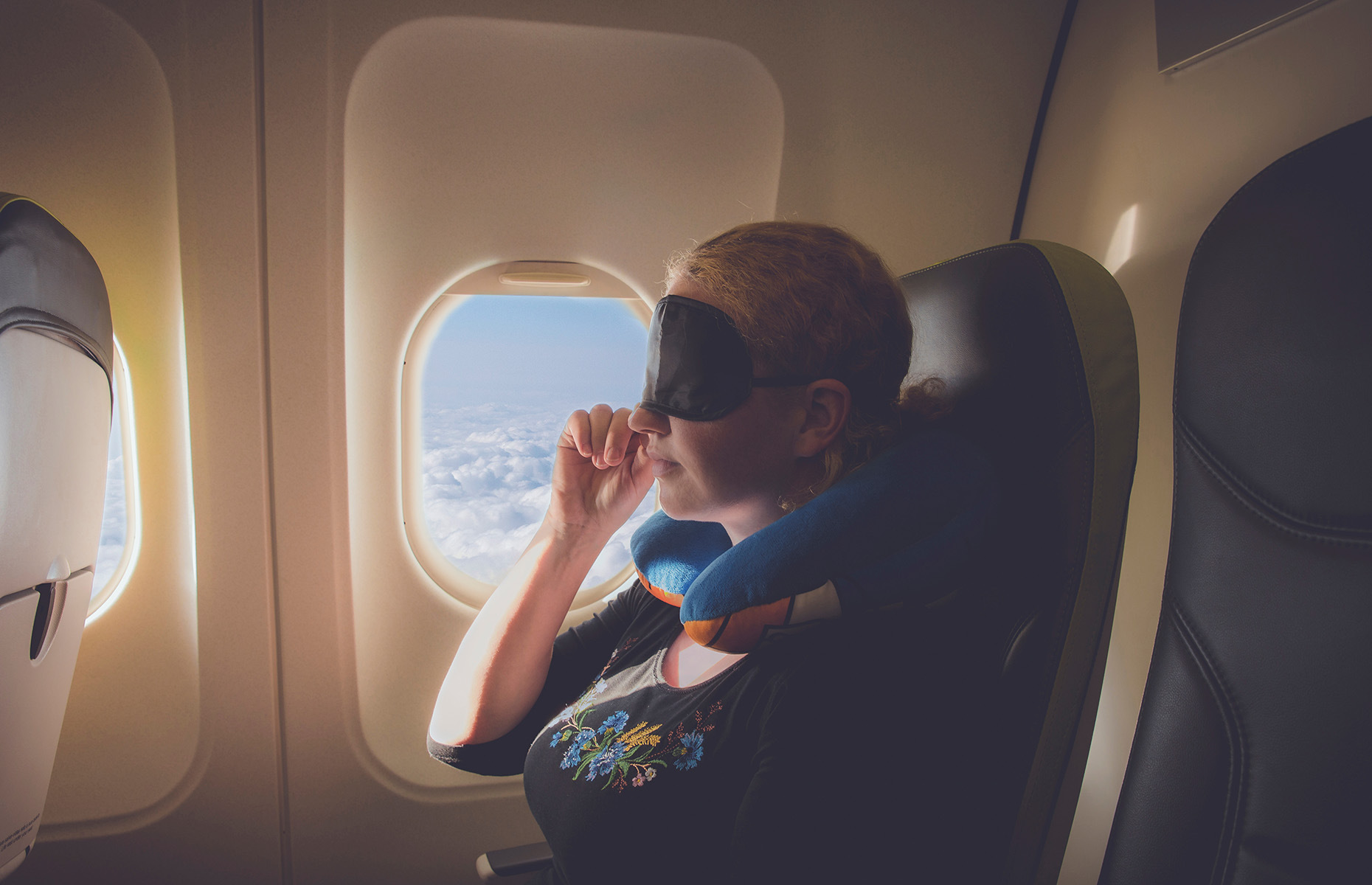 FotoHelin/Shutterstock
FotoHelin/Shutterstock
Move around
It's vital to move on a flight – particularly long-haul – so get up and walk around the cabin as much as possible, and do some shoulder and ankle rolls, feet tapping and stretches in your seat. This movement will help to keep your blood flowing and to prevent you from becoming stiff and tense. Immobility can increase the risk of deep vein thrombosis (DVT), sometimes called ‘economy-class syndrome’, and while it’s still unclear whether flying raises the risk of DVT, prolonged immobility is unhealthy in any context. If you’re worried or know you’re at risk, speak to your doctor about the benefits of wearing flight socks.
Water power
Staying hydrated during any flight is crucial. The plane’s air-conditioning, the altitude and any jet lag can all leave you feeling groggy and bloated and can dry out your skin. Drinking plenty of water, or the occasional electrolyte-heavy beverage (sports drinks), will help your body cope with the unnatural air travel environment. You should drink a bottle of water for every hour you’re in the air – the increased bathroom breaks will offer an additional opportunity to stretch your legs.
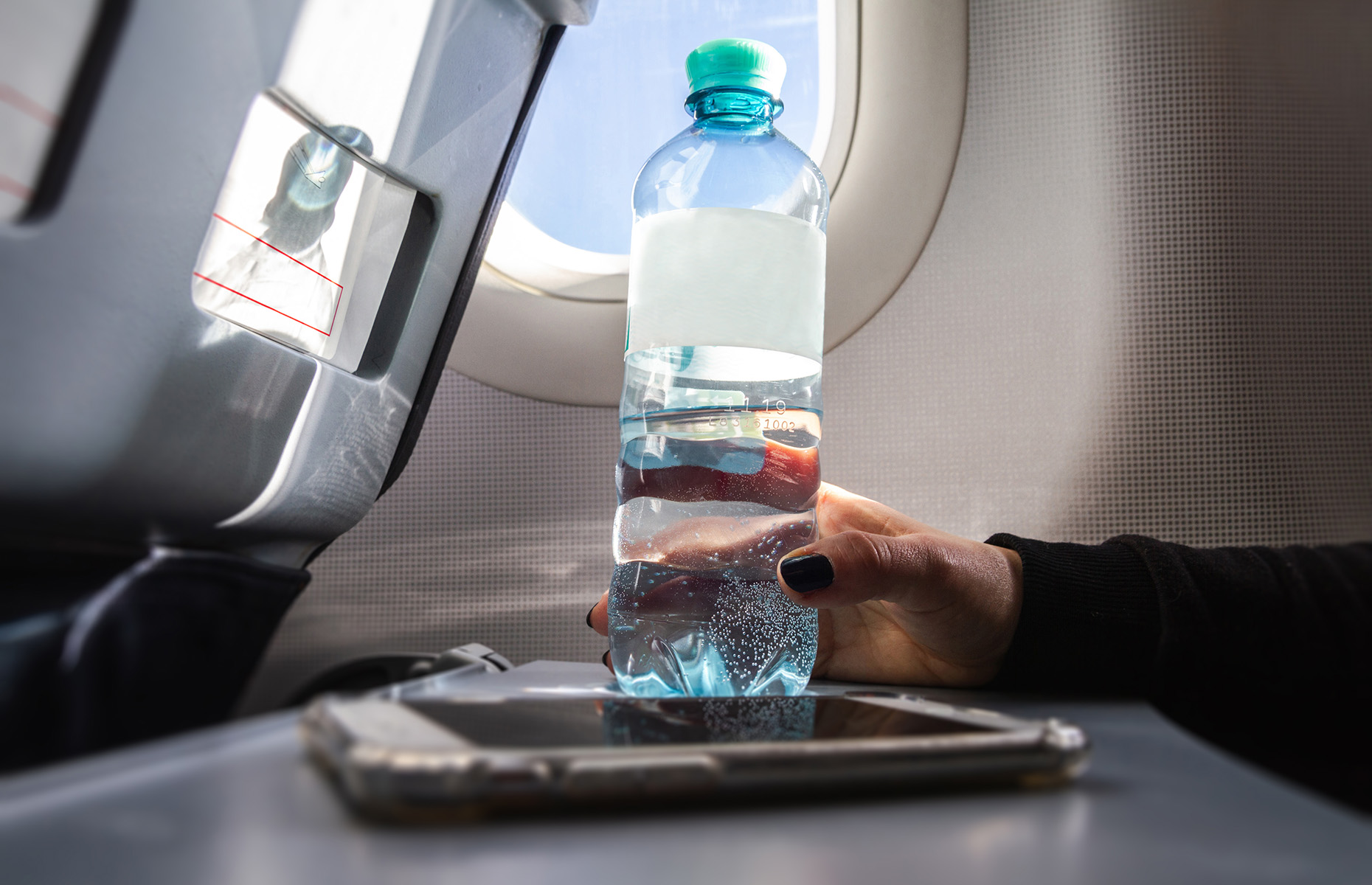 Longfin Media/Shutterstock
Longfin Media/Shutterstock
Kick the booze
Many of us like a drink on holiday, but alcohol presents a double threat to airplane wellness. Not only does alcohol make it more difficult for cells to absorb oxygen, which will worsen your altitude symptoms, but it also dehydrates your body faster. So, if you’re feeling stressed about flying, opt for a non-caffeinated tea instead of a stiff drink. At the same time, try to avoid caffeinated beverages (and diuretics) like coffee and soda.
READ MORE: Amazing airport and flying hacks you need to know now
Time capsule
A flight is the perfect opportunity to make the most of a lack of distractions. Do something you don’t usually find the time to do, like read, write, sketch, listen to an album, or watch a TV series or film. Alternatively, use the uninterrupted time to do some mindfulness or meditation – there are plenty of podcasts available.
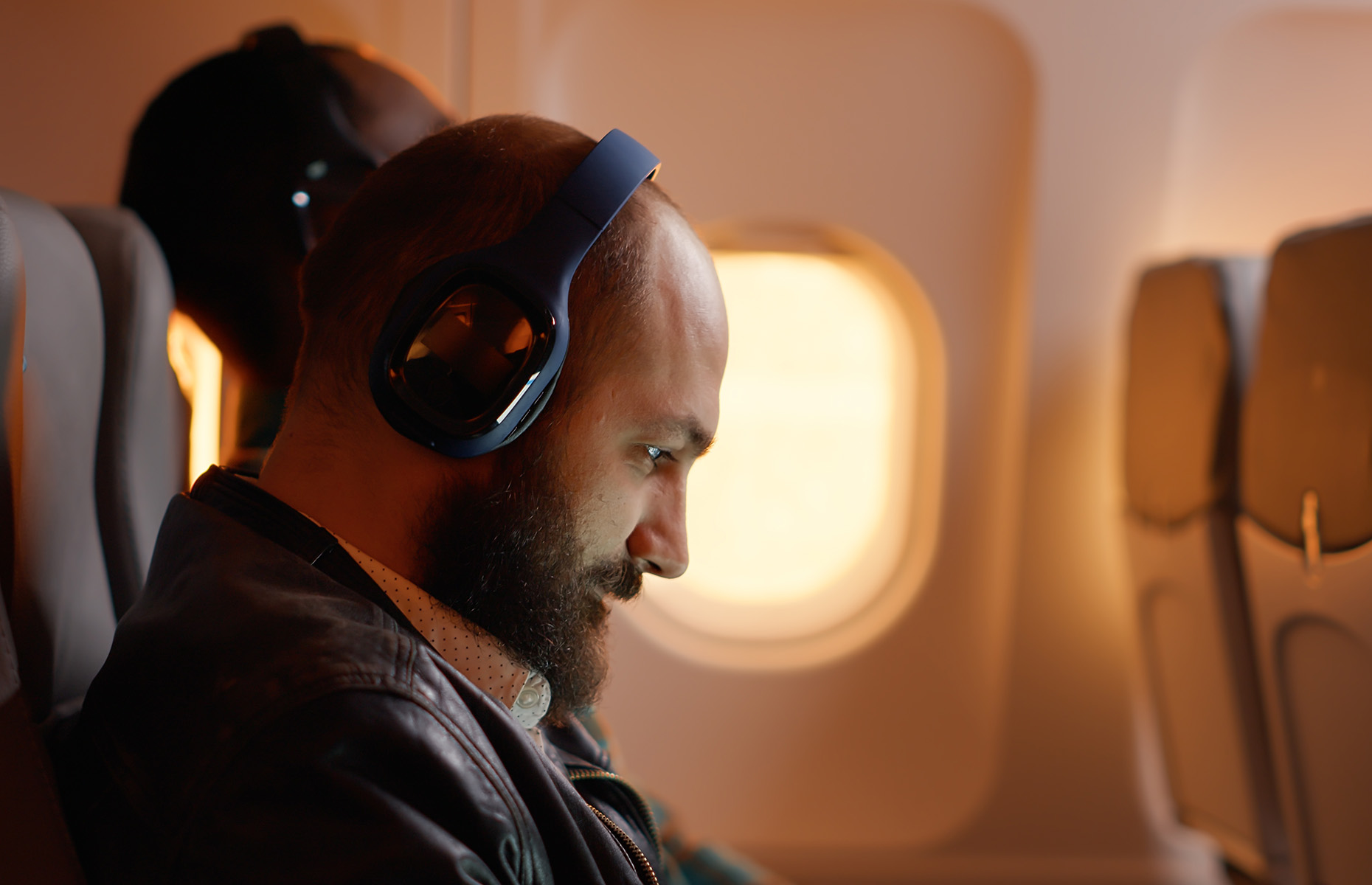 DC Studio/Shutterstock
DC Studio/Shutterstock
Mind you own business
Rather than relax, you might want to use the spare time to get some jobs done that have been playing on your mind. Whether it’s work related or personal admin, ticking off some of those jobs can clear your mental workload and allow you to prepare for your trip. Even if you don’t complete the list, writing down everything you’ve been trying to remember can help you destress.
READ MORE: 11 ways to get cheap flights for your next trip
Watch the clock
If you’re a regular flyer, you’ve probably experienced the dreaded jet lag. It’s simply your body clock becoming out of sync with a new time zone. Often, when we think about jet lag, we think about sleep problems – but it’s often more than that. Although the main issues are fatigue, jet lag can also make you experience digestive issues such as indigestion, constipation, diarrhoea, loss of appetite and bloating.
The key to minimising jet lag is to adjust to your new time zone as quickly as possible by staying up – if it’s daytime – and eating meals and going to bed according to the time on your watch. Jet lag tends to be worse as you travel from west to east, but it doesn’t last forever, and for each time zone you cross, it may take a day to adjust.
Top o’ the morning
If you’re flying while it’s night-time in your destination, try and sleep on the plane and hold off eating until breakfast time. If possible, wait until you’ve landed in the morning and get a hearty breakfast or brunch, with some natural light. This will help your body recognise that it’s the start of the day. It could also help to include as much of your usual morning routine into your journey as possible. For example, clean your teeth and wash your face before you go to sleep and then again when you wake up. Freshen up with clean underwear and deodorant before you land.
 George Rudy/Shutterstock
George Rudy/Shutterstock
Go quietly into the night
If you’re landing in the evening, stay awake on the plane as much as you can, keep yourself entertained and move and stretch regularly. If you’re not picking up a car and driving, start winding down as you approach your destination, so you can get to sleep as soon as possible. Then force yourself to wake up at a reasonable time the following morning.
READ MORE: Top airport parking tips
Some of the above tips were provided by international healthcare insurer, AXA Global Healthcare.
Lead image: Have a nice day Photo/Shutterstock
Comments
Be the first to comment
Do you want to comment on this article? You need to be signed in for this feature